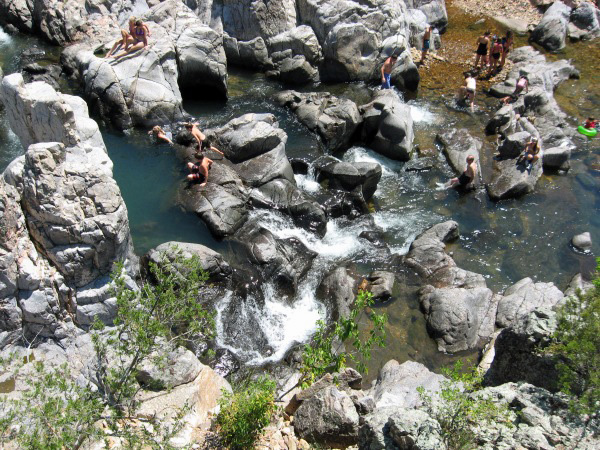Missouri’s only national forest, the Mark Twain, encompasses roughly 1.5 million acres, mostly within the Ozark Highlands. Located across southern Missouri and northern Arkansas, the Ozark Highlands are an ancient landscape characterized by large permanent springs, over 5,000 caves, rocky barren glades, old volcanic mountains and nationally recognized streams. Portions of the Ozarks were never under oceans, nor were the areas glaciated.
A trademark of the Mark Twain is plant and animal diversity. The area is described by The Nature Conservancy as a “biologically rich ecological resource.” The eastern upland oak hardwood and southern pine forests converge here with the drier western bluestem prairie of the Great Plains, creating a distinctive array of open grassy woodlands and savannas. This rich mixture of unique, diverse and ecologically complex natural communities (some 65 in all) provides a home for nearly 750 species of native vertebrate animals and over 2,000 plant species. The number of species that are endemic or restricted solely to the Ozarks eco-region (almost 200 species) rivals those found in the tropics or glacial eco-regions.
Geologic features associated with the karst terrain and igneous outcroppings of the Ozarks provide a wide variety of interest to the landscape. There are sheer rock faces, underground caverns, natural bridges, sinkholes, knobs and caves throughout the Forest. Caves provide habitat for unique animals like cave salamanders and southern cave fish. Shut-in creeks, whose enormous rock boulders restrict flow, create nationally renowned white water kayaking and canoeing opportunities.
Due to the karst topography, there is an abundance of natural springs found in the area. The Ozarks are home to the world’s largest collection of “first magnitude” springs (those with over 65 million gallons of water daily flow). Almost 3,000 springs feed rivers and streams that flow year round. Many of these streams are so clear that ten feet of depth appears to be only one foot deep.
- http://www.fs.fed.us/r9/forests/marktwain/about/niche_statement/index.php





1 comment:
I've seen parts of it near Dora, MO. Absolutely breathtaking, but I'd love to spend more time there. Maybe in the spring.
Post a Comment